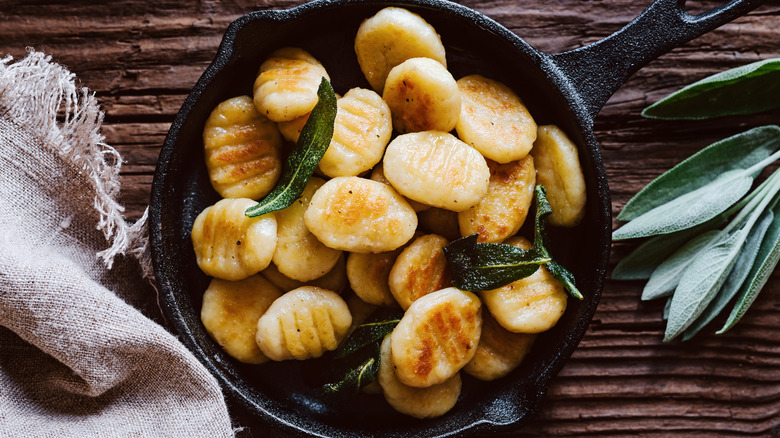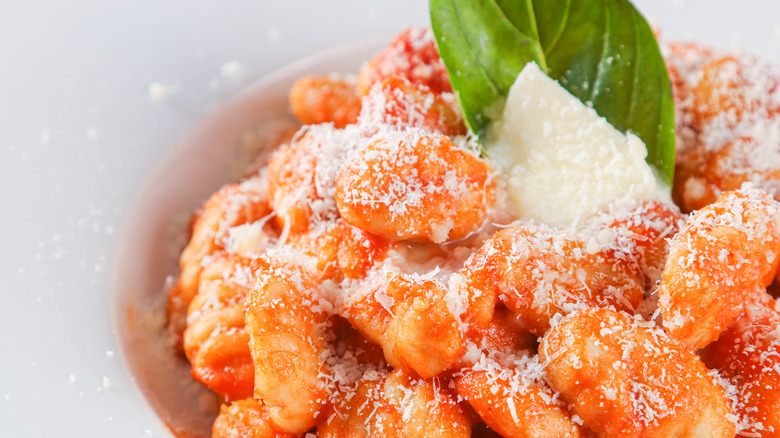Why You Can Skip The Eggs In Gnocchi
The perfect comfort food, gnocchi, is sometimes described as Italian potato dumplings (per DeLallo). They are traditionally made from potatoes with some added flour to form them into small, fluffy mounds. This traditional dish was invented sometime around the 16th or 17th century though variations of it existed before then (via Saveur).
Gnocchi is traditionally served with sauce, though each Italian region prefers a different kind. In Veneto, for example, you may enjoy a tomato sauce, while Lombardy may serve gnocchi in a simple butter and Parmesan sauce (via The Pasta Project). It also pairs well with a cream-based sauce, like in this creamy chicken gnocchi recipe.
Throughout the years, recipes for gnocchi have been altered and reinvented, such as for sweet potato gnocchi. Each one can differ depending on where they come from. Many modern variations of gnocchi add an egg to act as a binder while cooking, but this may not always be the best method.
Keep it simple
Whether or not you should add an egg to your gnocchi is actually somewhat of a debate between the two Northern Italian regions famous for the dish, explains Country Trading Co. While recipes from Veneto appreciate the extra binding assistance, recipes from Piedmont take a hard pass on it (via Country Trading Co.).
The added moisture from the egg requires extra flour to absorb it, which can detract from the flavor of the potato, says Real Simple. The publication explains that less flour means that this recipe's final product will turn out fluffier. Instead, Real Simple suggest adding a little bit of ricotta cheese to create the bind while also adding an extra layer of creaminess to the dish. Once all of the ingredients are properly combined, the gnocchi should ideally be just a little bit sticky before cooking (via Real Simple).
Not adding eggs is just one way that you can customize your gnocchi. With so many sauce options and different variations of the dish, this Italian staple is easily customized to your individual taste.

